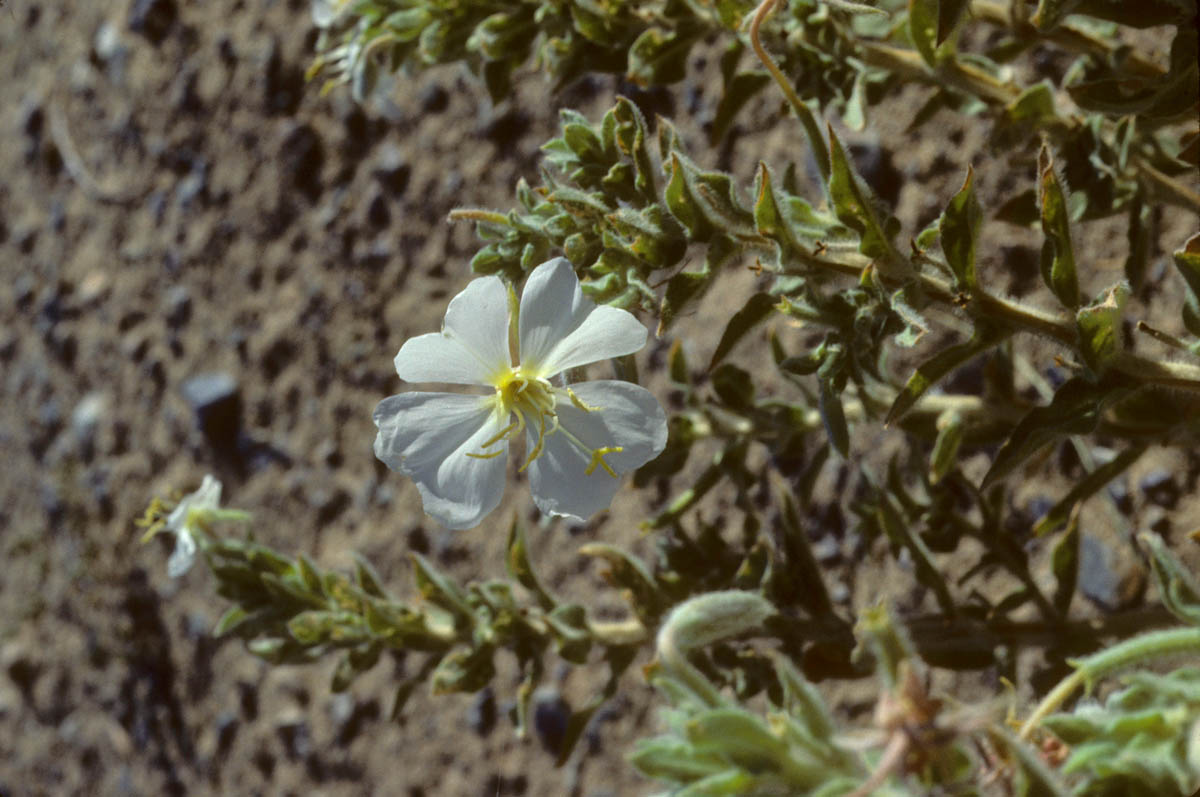California evening primrose
(Oenothera avita)

Description
Oenothera avita, commonly known as the California evening primrose, is a species of flowering plant in the Onagraceae family. It is native to California, USA, and is found in a variety of habitats including grasslands, oak woodlands, and chaparral. This plant is often cultivated for its ornamental value and its therapeutic properties. Description and Taxonomy Oenothera avita is a herbaceous perennial plant that grows up to 1-3 feet (30-90 cm) tall. The leaves are linear to oblong in shape, measuring 2-8 cm long and 0.2-1.2 cm wide, and are arranged in a rosette at the base of the plant. The stem is typically unbranched and bears multiple flowers that open at dusk and close at dawn. The flowers are yellow and have four petals, measuring 2-5 cm across. The fruit of the plant is a capsule that contains numerous small, black seeds. The genus Oenothera belongs to the family Onagraceae, which includes many other species of plants, including the evening primrose. Oenothera avita is part of the Oenothera sect. Oenothera subsect. Oenothera, which contains about 18 species that are native to North America. Distribution and Habitat California evening primrose is a herbaceous perennial plant that grows up to 1-3 feet (30-90 cm) tall. The plant has linear to oblong-shaped leaves that measure 2-8 cm long and 0.2-1.2 cm wide. The stem is typically unbranched and bears multiple flowers that open at dusk and close at dawn. The flowers are yellow and have four petals, measuring 2-5 cm across. The fruit of the plant is a capsule that contains numerous small, black seeds. Oenothera avita is native to California, USA, and is found in a variety of habitats including grasslands, oak woodlands, and chaparral. It is a common species and is often found growing alongside roads and in disturbed areas. It is also cultivated as an ornamental plant and can be found in gardens and landscapes throughout California. Cultivation and Uses California evening primrose is often cultivated for its ornamental value. It is a hardy plant that requires little maintenance and is tolerant of drought and poor soil conditions. It is often used as a ground cover or border plant, and its yellow flowers provide a bright splash of color in gardens and landscapes. In addition to its ornamental value, Oenothera avita also has therapeutic properties. The plant contains high levels of gamma-linolenic acid (GLA), an omega-6 fatty acid that is believed to have anti-inflammatory and anti-aging effects. GLA is also used to treat a variety of conditions, including eczema, rheumatoid arthritis, and diabetic neuropathy. In traditional medicine, the roots of Oenothera avita were used to treat stomach and bowel problems, as well as to reduce fever and relieve pain. The plant was also used to treat respiratory infections and to promote wound healing. Conservation Status Oenothera avita is not considered to be a threatened species, and its populations are generally stable. However, the plant is susceptible to habitat destruction and fragmentation due to human activities, such as urbanization and agricultural development. In some areas, populations of California evening primrose have declined due to the introduction of non-native plants that compete with the species for resources. Therefore, while the species is not currently threatened, conservation efforts are important to protect its populations from habitat destruction and fragmentation. Conclusion Oenothera avita is a hardy and attractive plant that is native to California, USA. It is often cultivated for its ornamental value and is used in traditional medicine for its therapeutic properties. While the species is not currently threatened, conservation efforts are important to protect its populations from habitat destruction and fragmentation.
Taxonomic tree:







